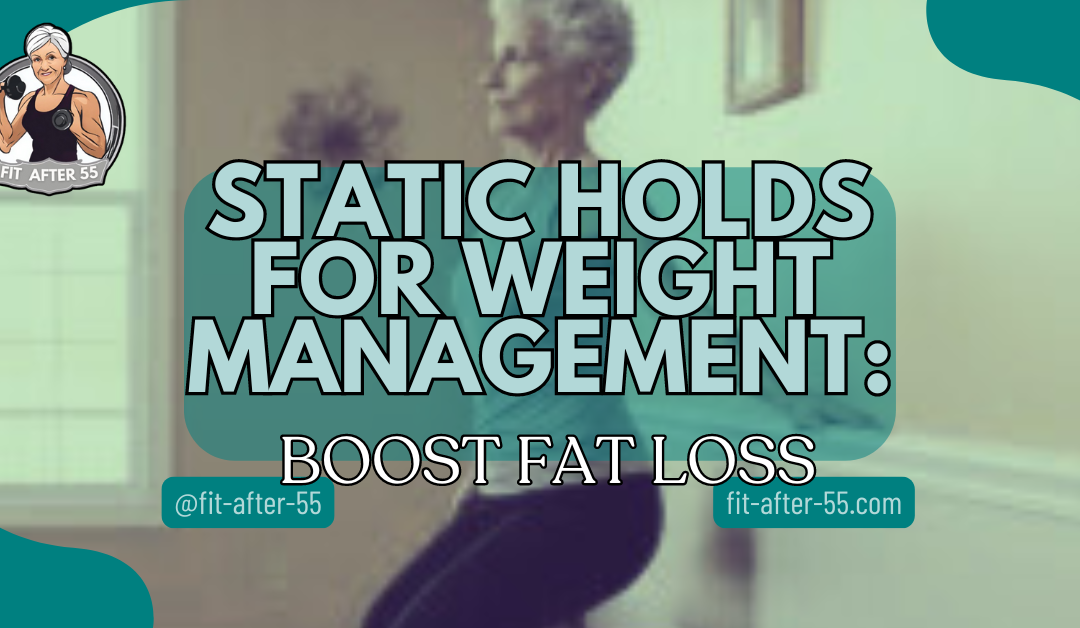Static holds for weight management offer a unique approach to fitness by challenging your muscles to maintain a fixed position. This method enhances muscle strength and endurance and promotes increased calorie burn. Incorporating static holds into your workout routine can effectively boost your metabolism and support your weight management goals.
These isometric exercises come in various forms, from planks to wall sits, each targeting different muscle groups. Integrating static holds into your regimen can significantly improve muscle tone and overall fitness. This article delves into the benefits of static holds and how they can play a crucial role in your weight management strategy.
Static Holds for Weight Management: Unlocking Isometric Strength for Fat Loss

Static holds are potent tools for weight management. These exercises involve maintaining a fixed position for a set amount of time, challenging your muscles in a unique way. By incorporating static holds into your workout routine, you can boost muscle strength, improve endurance, and burn calories more effectively.
Static holds come in many forms, from planks to wall sits to barbell holds. Each type targets different muscle groups and offers specific benefits. For example, a high plank hold can strengthen your core, while a barbell static hold can improve your grip strength.
Adding static holds to your workouts can help you reach your weight management goals. These exercises keep your muscles under tension for longer periods, leading to increased muscle breakdown and rebuilding. This process can boost your metabolism and help you burn more calories even when you’re not exercising.
Key Takeaways
- Static holds build muscle strength and endurance by maintaining a fixed position, leading to improved overall fitness.
- These exercises boost calorie expenditure by keeping muscles under tension, which can aid in weight management.
- Different static holds, like planks, wall sits, and barbell holds, target various muscle groups, offering a comprehensive workout.
- Regular practice of static holds can elevate your metabolism, helping you burn more calories even at rest.
- Static holds are versatile and can be easily incorporated into any workout routine, making them a practical addition to fitness regimens.
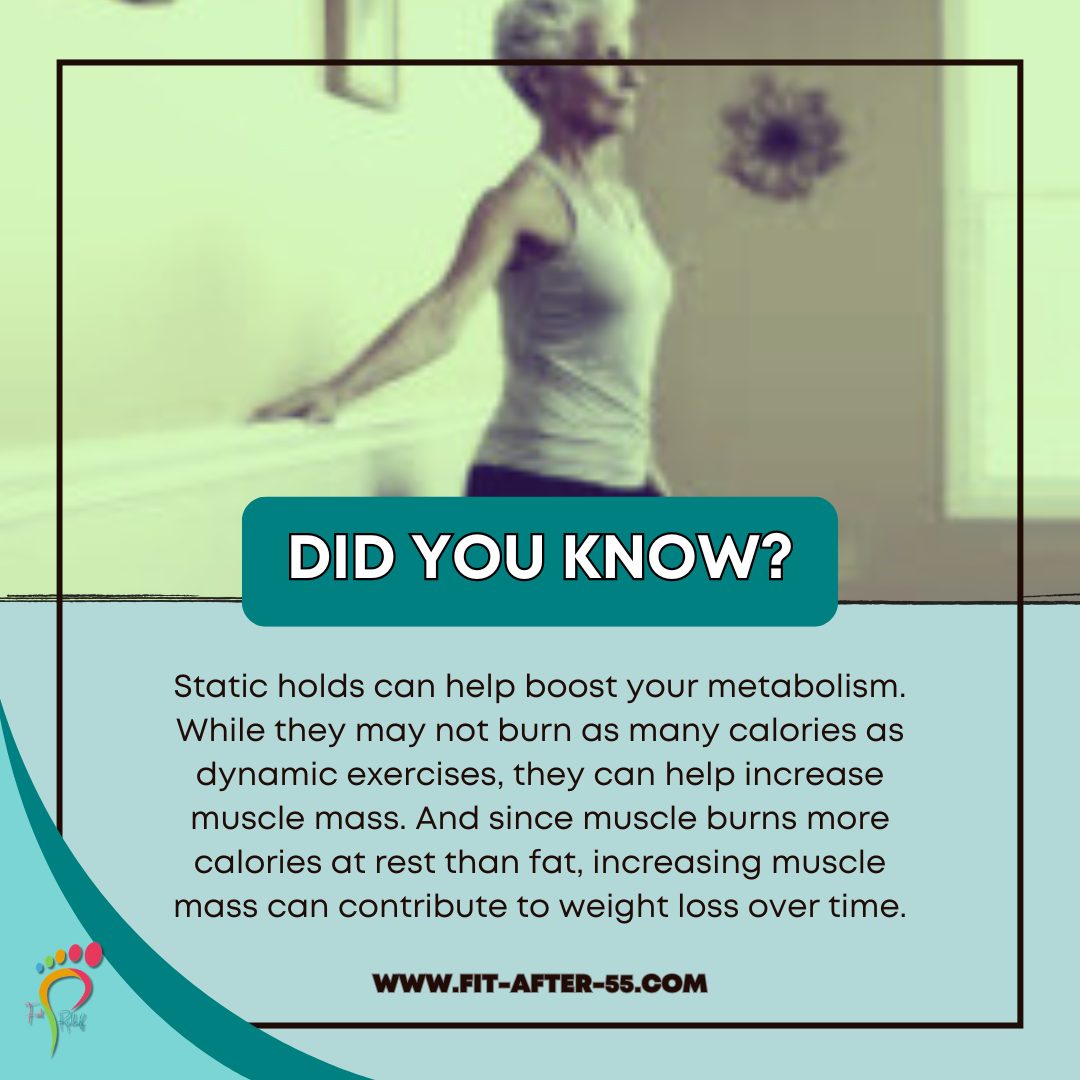
The Science of Static Holds
Static holds for weight management are exercises where you maintain a fixed position without moving. These exercises work by creating tension in your muscles for an extended period. When you do static holds, your muscles contract isometrically, tightening without changing length.
This type of contraction builds strength and endurance in your muscles, making static holds an effective tool for enhancing your overall fitness and supporting weight management goals. During a static hold, your body uses energy to keep your muscles tight.
This burns calories and can help with weight management. Static holds also increase your muscles’ time under tension. This leads to muscle breakdown and growth. As you build more muscle, your body burns more calories even when resting.
Your body’s stabilizing muscles work hard during static holds. These muscles help you keep good posture and balance. Strengthening them can improve your overall fitness. Static holds can be done with or without weights. Examples include:
- Planks
- Wall sits
- Chin-up holds
- Barbell holds
You can add static holds to your workout routine to boost strength and aid weight management. Start with short holds and gradually increase the time as you get stronger.
Benefits of Static Holds for Weight Management

Static holds for weight management can boost your fitness and help manage your weight. These exercises offer several advantages for those looking to shed pounds or maintain a healthy weight.
Enhanced Muscular Endurance
Static holds improve muscular endurance. When you hold a position, your muscles work hard to maintain it, building stamina over time. You’ll notice improvements in everyday activities. Carrying groceries or holding a child becomes easier.
Your muscles learn to work for longer periods without tiring. Static holds also strengthen your core. A strong core helps with balance and stability, making other exercises easier and more effective.
Increased Metabolic Rate
Static holds can boost your metabolism. When you perform these exercises, your body continues to burn calories even after you finish. Your muscles need energy to maintain the hold. This increases your heart rate and breathing.
As a result, you burn more calories during and after the workout. Regular static hold exercises can lead to more muscle mass. More muscle means a higher resting metabolic rate. You’ll burn more calories even when you’re not exercising.
Improved Muscle Tone
Static holds are great for toning your muscles. They target specific muscle groups and keep them under tension. This constant tension helps reshape your muscles. You’ll see more definition and a leaner appearance.
Static holds are especially effective for toning your arms, legs, and core. You can do static holds anywhere, anytime, and no equipment is needed for many exercises, making it easy to fit them into your daily routine.
Did You Know?
Incorporating static holds into a workout routine can improve muscle growth. Static holds create muscle tension for extended periods, leading to muscle breakdown. This breakdown triggers the body to rebuild stronger muscles, promoting growth and strength gains.
Types of Static Holds
Static holds are exercises where you maintain a fixed position for a set time, making them an effective strategy for static holds for weight management. They help build strength and endurance, supporting your weight management goals. Here are some common types you can try:
Plank Variations
The plank is a classic static hold that targets your core. Start with a basic forearm plank. Keep your body straight from head to heels. Hold for 30-60 seconds. Try side planks to work your obliques. Balance on one forearm with your body in a straight line. Hold for 30 seconds on each side.
For an extra challenge, try a high plank. Push up onto your hands instead of forearms. This engages your shoulders more. Add movement with plank reaches. In a high plank, reach one arm forward. Hold for 5-10 seconds, then switch arms.
Wall Sit
Wall sits target your legs and core. Find a flat wall and slide down until your thighs parallel the ground. Keep your back against the wall. Your knees should be at 90-degree angles. Hold this position for 30-60 seconds. As you get stronger, try to hold longer.
To increase difficulty:
- Lift one foot off the ground.
- Hold for 10-15 seconds, then switch feet. You can also try holding weights in your lap.
- Start with light dumbbells and gradually increase the weight.
Hollow Body Hold
The hollow body hold strengthens your entire core. Lie on your back with arms extended overhead. Lift your arms, legs, and shoulders off the ground. Your lower back should press into the floor. Hold this position for 20-30 seconds. As you improve, try to hold longer.
To make it easier:
- Bend your knees or keep your arms by your sides.
- For a challenge, add small rocks to your arms and legs. You can also try hollow rocks.
- Maintain the hollow position while gently rocking back and forth.
L-sit
The L-sit is an advanced static hold. It works your core, arms, and hip flexors. Sit on the ground with your legs straight in front of you. Place your hands on the ground beside your hips. Push down to lift your body off the floor. Keep your legs straight and parallel to the ground.
Hold this position for 10-30 seconds. Try one leg at a time if you can’t lift both legs. Practice on raised surfaces like parallel bars or sturdy chairs. As you get stronger, work towards holding the L-sit longer. You can also raise your legs higher for a V-sit.
Check out this extra video on 3 Essential Core Exercises for Seniors.
By: Margaret Martin, Physical Therapist
Incorporating Static Holds Into Your Routine
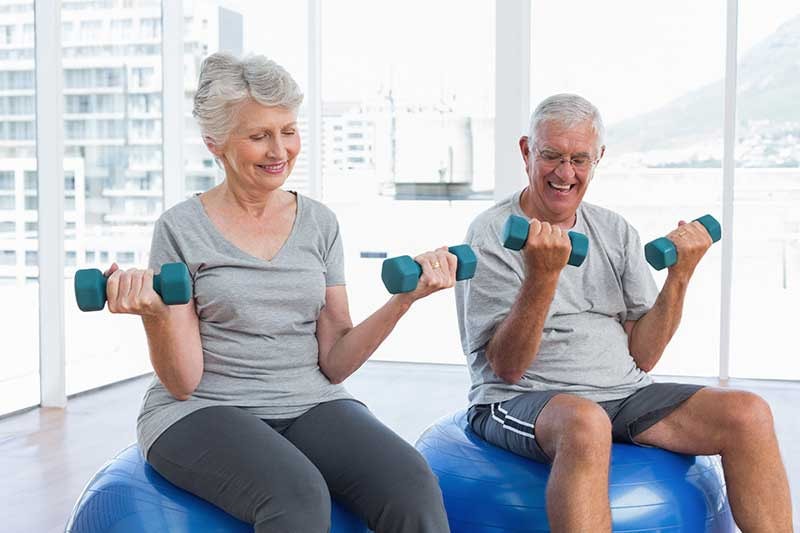
Static holds can boost your weight management efforts when added to your workouts. They build strength and endurance while burning calories. Here’s how to include them effectively:
Frequency and Duration
Add static holds to your routine 2-3 times per week. Start with shorter holds of 10-15 seconds. Gradually work up to 30-60 second holds as you get stronger. For beginners, try 3-10 second holds. This timeframe helps build mind-muscle connection and joint strength. Pick 3-5 different static hold exercises per workout. Good options include:
- Planks
- Wall sits
- Glute bridges
- Overhead barbell holds
Rest 30-60 seconds between holds. Do 2-3 sets of each exercise.
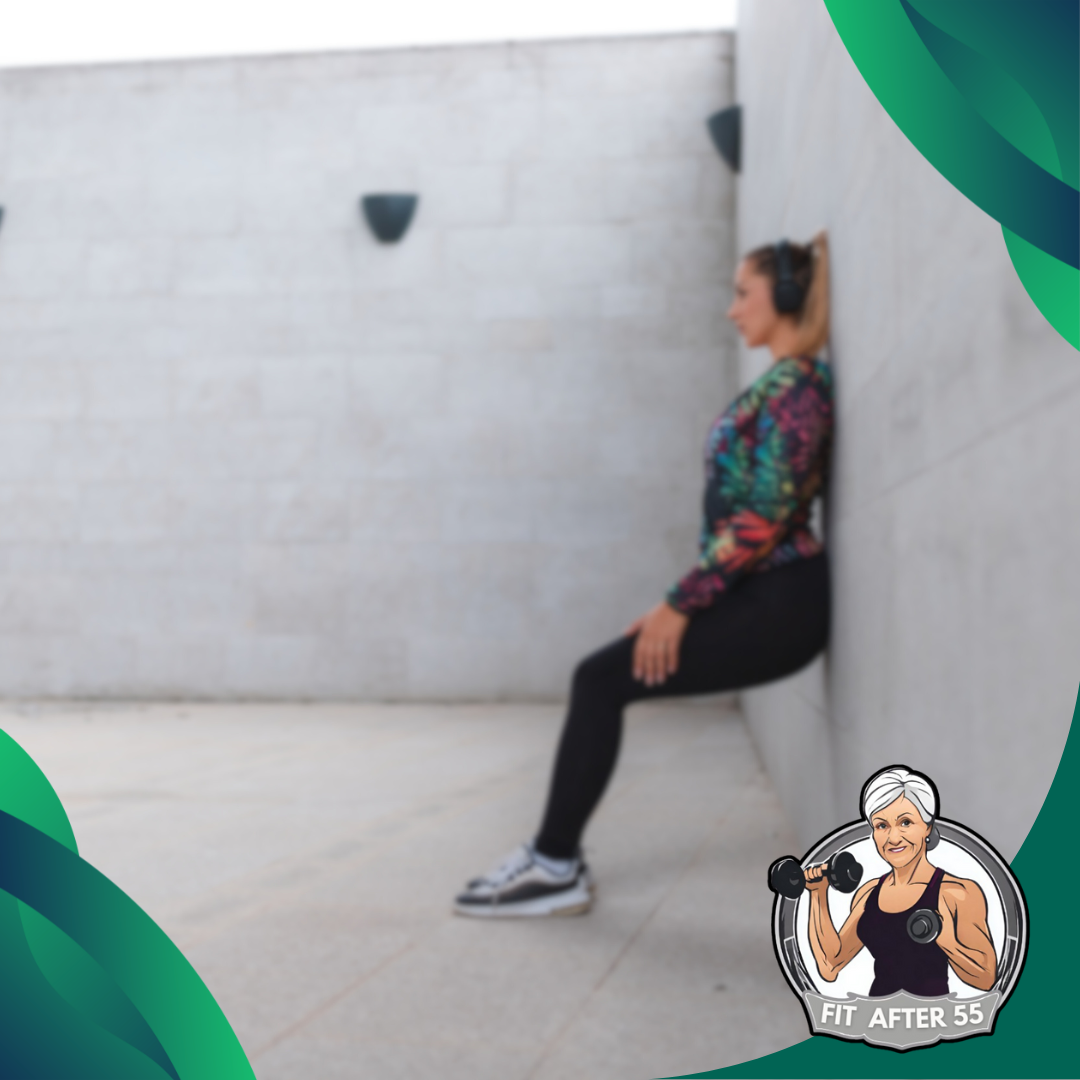
Progressive Overload
To keep seeing results with static holds for weight management, increase the challenge over time. Add 5-10 seconds to your hold duration each week. Once you can hold a position for 60 seconds, try these techniques:
- Add weight (weighted vests, dumbbells)
- Use unstable surfaces (balance discs, stability balls)
- Try single-limb variations
Track your progress. Note hold times and any added weight or variations used.
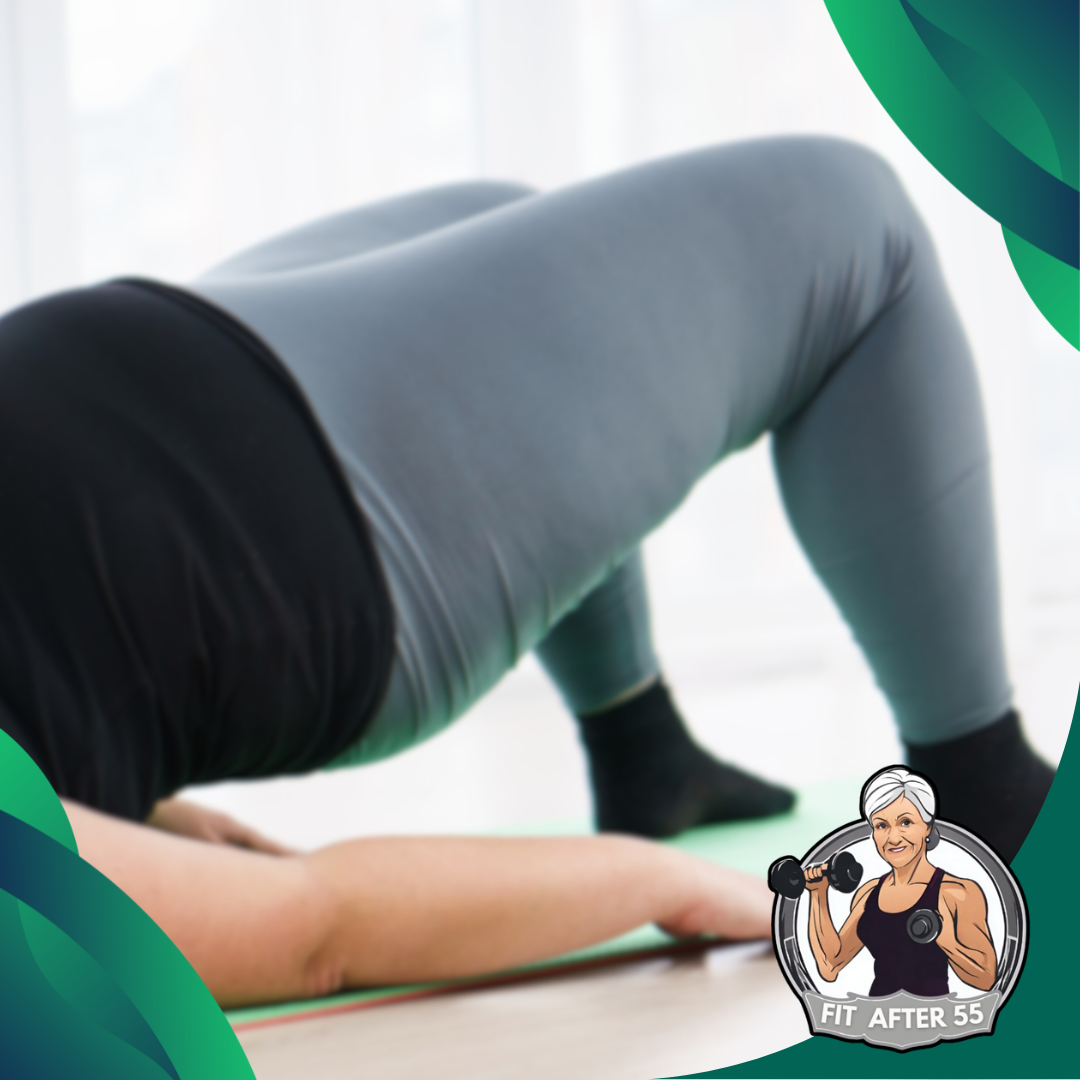
Combination with Dynamic Exercises
Mix static holds with regular exercises for a well-rounded workout. Try these combos:
- Plank hold + push-ups
- Wall sit + bodyweight squats.
- Chin-up hold + pull-ups
You can also use static holds as finishers. End your workout with 2-3 challenging holds to really feel the burn. For a time-saving workout, alternate between dynamic moves and static holds. This keeps your heart rate up while building strength. Remember to warm up before static holds. Do some light cardio and dynamic stretches to prepare your muscles.
Diet and Nutrition for Optimal Results
Proper nutrition is crucial in maximizing the benefits of static holds for weight management. Your food choices and eating habits can significantly impact your progress and results.
Caloric Intake and Deficit
To lose weight effectively, you need to create a calorie deficit. This means consuming fewer calories than your body burns. Aim for a moderate deficit of 500-750 calories per day. Use a calorie-tracking app to monitor your intake. This helps you stay accountable and make informed food choices.
Choose nutrient-dense foods to feel fuller on fewer calories. Vegetables, fruits, lean proteins, and whole grains are excellent options. Avoid crash diets or extreme calorie restrictions. These can slow down your metabolism and lead to muscle loss, which is counterproductive for static hold exercises.
Macronutrient Balance
A balanced diet with the right mix of macronutrients supports your static-hold workouts and weight management goals.
- Protein: Aim for 1.6-2.2 grams per kilogram of body weight. This helps maintain muscle mass and promotes satiety.
- Carbohydrates: Focus on complex carbs for sustained energy. They should make up 45-65% of your total calories.
- Fats: Include healthy fats in your diet. They should account for 20-35% of your daily calories.
Consider timing your meals around your workouts. Eating protein and carbs before and after static holds can improve performance and recovery.
Hydration and Weight Management
- Proper hydration is often overlooked but crucial for weight management and exercise performance.
- Drink water throughout the day. Aim for 8-10 glasses or more if you’re very active.
- Staying hydrated can help control hunger and boost your metabolism. It also supports muscle function during static holds.
- Consider drinking a glass of water before meals. This can help you feel fuller and reduce calorie intake.
- Limit sugary drinks and alcohol. They add empty calories and can hinder your weight loss efforts.
Monitoring Progress and Adaptation

Keeping track of your static holds for weight management performance is key to success. Regular checks and adjustments will help you stay on course and see results.
Tracking Strength Gains
To measure your static hold progress:
- Focus on time under tension.
- Use a stopwatch or timer app to record how long you can maintain each hold.
- Keep a log of your hold times for different exercises.
- Try to increase your hold time by a few seconds each week.
This gradual improvement shows you’re getting stronger. Pay attention to form quality, too. As you get stronger, you should be able to maintain better posture during holds.
Adjustments for Plateaus
If your progress stalls, it’s time to mix things up. Try these tips to break through plateaus:
- Increase hold time by 5-10 seconds
- Add small weights to bodyweight holds
- Change hand or foot positions slightly.
- Do holds at different times in your workout
Don’t be afraid to take a step back if needed. Reducing hold time or weight can help you refocus on form.
Body Composition Changes
Static holds can help change your body shape over time. Here’s how to track those changes:
- Take weekly progress photos from the front, side, and back
- Measure key body parts like waist, hips, and arms monthly.
- Use a body fat caliper or smart scale for body fat %
Look for small, steady changes. You might notice more muscle definition or a slimmer waist. Remember, weight loss could improve sports performance if you have excess body fat. Static holds can be part of a larger plan to reach your ideal body composition.
Safety Considerations and Injury Prevention
When doing static holds for weight management, you need to keep safety in mind. Start with lighter weights to learn proper form. This helps prevent injuries as you build strength. Always warm up before static holds. Do some light cardio and dynamic stretches. This gets your muscles ready and lowers injury risk. Use the proper grip.
For barbell holds, an overhand grip with hands shoulder-width apart works well. Keep your core tight to protect your back. Pay attention to your breathing. Take deep breaths and avoid holding your breath during the hold. This helps maintain good form. Wait to push too hard, too fast. Gradually increase hold times and weight. Listen to your body and stop if you feel pain.
Key safety tips:
- Use proper form
- Start with lightweights
- Warm up before holds.
- Breathe steadily
- Increase difficulty slowly
Good technique and education are crucial for injury prevention. If you need more clarification, ask a trainer for help. They can check your form and give tips. Remember to rest between workouts. This lets your muscles recover and grow stronger. Staying hydrated also helps prevent fatigue and injury.
Boost Weight Management with Static Holds
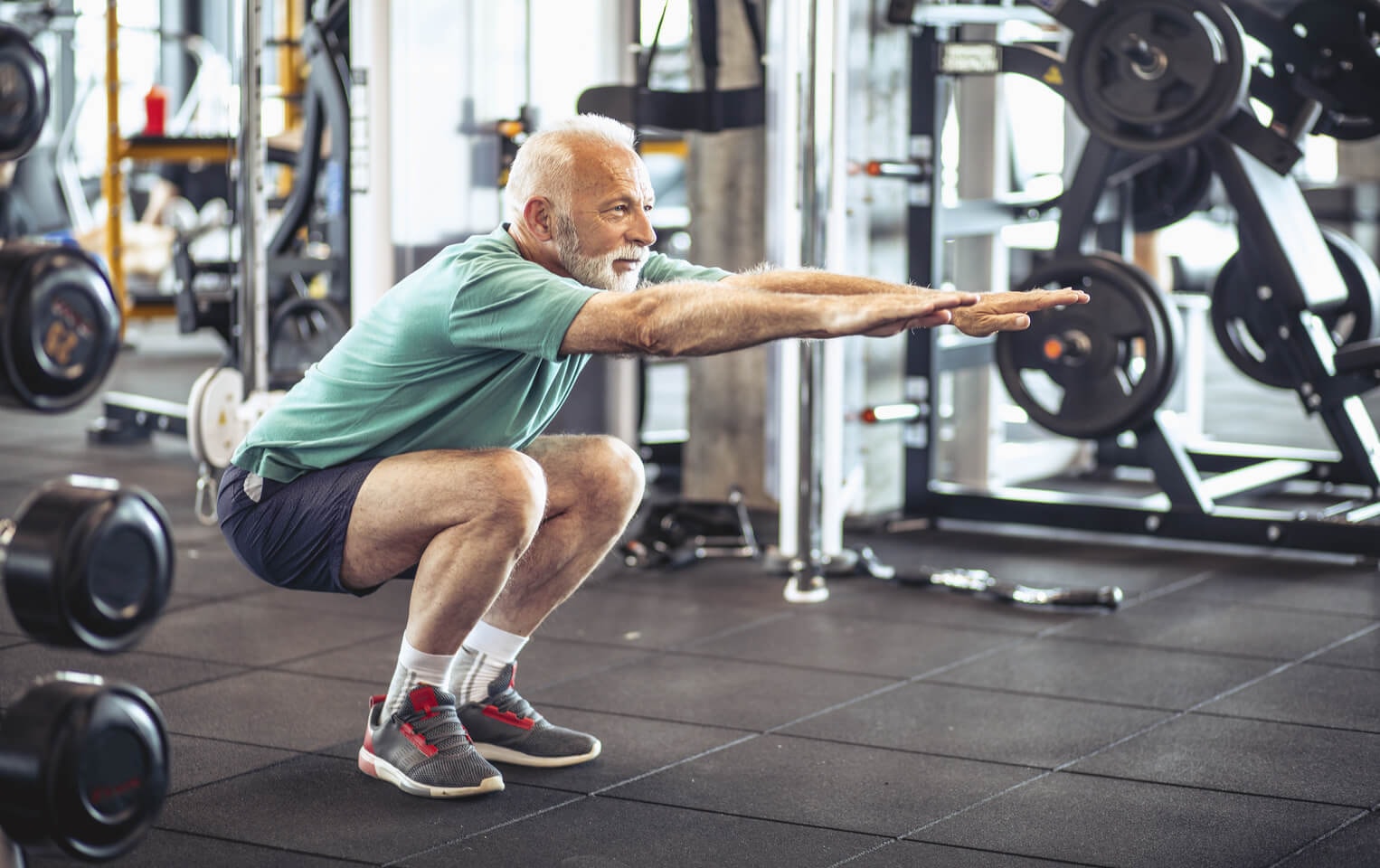
Static holds boost your weight management efforts. They help build strength and muscle without fancy equipment. You can do them anywhere, anytime. Try adding static holds to your workouts. Start with short holds and work up to longer ones. Choose weights that challenge you without hurting your form. Mix up your routine with different types of holds:
- Planks
- Wall sits
- Chin-up holds
- Dumbbell side holds
These moves target different muscle groups. They can help you burn calories and build lean mass. Remember to breathe during static holds. Keep good form to avoid injury. Listen to your body and rest when needed. Static holds work well at the end of your workout. They can give you that final push to fatigue your muscles.
With regular practice, you’ll see gains in strength and endurance. This can support your weight management goals over time. Stay steady and keep at it. Static holds might seem simple, but they pack a punch for your fitness journey.
Here’s an additional video about Senior & Beginner Workout – 20 minute Seated Dumbbell Easy Arms.
By: SeniorShape Fitness
Maximize Your Fitness: The Power of Static Holds for Weight Management
Static holds for weight management are a powerful addition to any fitness routine, offering significant benefits for muscle strength and endurance. By maintaining a fixed position, these exercises challenge the muscles and increase calorie burn, making them an effective tool for boosting metabolism and supporting weight management goals. Incorporating various static holds for weight management into your routine—such as planks, wall sits, and barbell holds—can enhance muscle tone and overall fitness, contributing to long-term success.
With regular practice, static holds for weight management can provide a solid foundation for achieving strength and endurance gains. They might seem simple, but their impact on your fitness journey can be substantial. Stay consistent, gradually increase the intensity, and use static holds to complement your overall workout regimen for optimal results.
Frequently Asked Questions
What Are the Benefits of Static Hold Exercises for Weight Management?
Static holds can help with weight management by increasing muscle tension. This tension burns calories and boosts metabolism. You also build lean muscle mass, which helps your body burn more calories even at rest.
How Do Static Holds Compare to Dynamic Exercises in Terms of Calorie Burning?
Static holds burn fewer calories during the exercise than dynamic movements. However, they create muscle breakdown, leading to more calorie burning after the workout. This effect can last for hours, helping with overall weight management.
In What Ways Do Static Hold Bench Presses Benefit Overall Fitness and Strength?
Static hold bench presses improve your grip strength and arm stability. They also target your chest, shoulders, and triceps. This exercise can help you break through plateaus in your regular bench press and boost overall upper body strength.
Experience Wellness and Flourish: Join the Fit After 55 Community!
Find your fitness motivation with Fit After 55!
Visit our website (https://www.vitalityseniorliving.com/resources_for_senior/staying-fit-at-55/) for expert tips, insightful content, and product reviews designed specifically for seniors. Connect with others who are equally passionate about health and fitness on our Facebook page (https://www.facebook.com/fitafter50dotcom/).
Let’s start this fitness journey together and show that age is no barrier!

